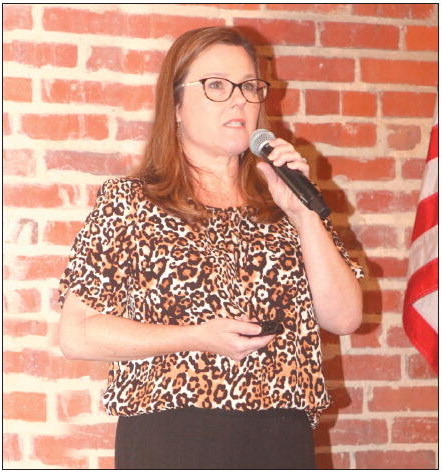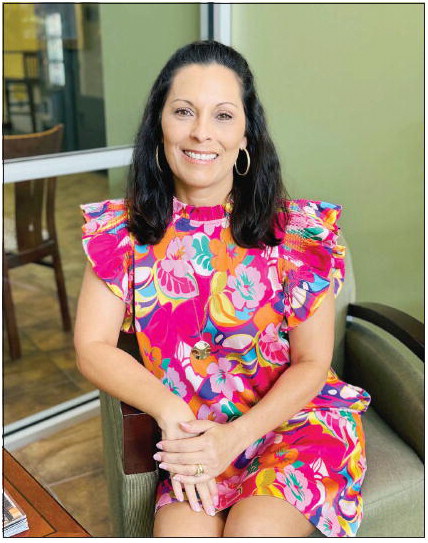editorials


Too Much Plastic
Last week, my sisterin- law, Georgia, gave me something called a “shampoo bar.” It came packaged in a simple paperboard box with a mermaid on the front and the words, “peppermint and tea tree oil with coconut, olive and jojoba oils.” Inside, I found something that looked much like an oversized bar of soap, but unlike Ivory or Dove, you can wash your hair with the bar without it leaving a soapy, waxy residue on your hair.
“No plastic bottle,” she explained. “I remember your talking about reducing the amount of plastic you use in your daily life, so when I saw this, I thought you might want to try it.” I appreciate her gesture.
You see, our world is drowning in plastic — plastic this and plastic that. Now, there’s no denying that plastic has revolutionized life as we know it. It’s durable, versatile, can be molded into almost any shape, and is rather cheap to manufacture, but there are other costs and consequences associated with using a lot of plastic, and we are paying the price for it, but it’s not getting a lot of air time.
The truth is this — very little plastic gets recycled these days. Even if you are separating it from your trash and throwing it in your county’s recycle bins like I do each and every month, at present, it probably isn’t actually going to a recycling facility for processing. The plastic pipeline is broken and has been for quite some time. Our country used to send a lot of plastic waste to China, but last year, China decided they didn’t want our plastic any more. Another issue is simply that it costs less to make plastic from scratch these days than it does to recycle plastic and use it again, so guess what happens?
And so plastic products end up in landfills, on the sides of our roads, in our rivers, in our lakes and ponds, and in our magnificent oceans. And plastics are different than banana peels and paper in that it takes a very long time for plastics to break down and decompose — some hundreds and others thousands of years.
There are giant garbage patches in our oceans now. One of them, the Great Pacific Garbage Patch, is a massive floating island of plastic three times the size of France. Can you even imagine that?
Ocean garbage patches are much more than simple floating islands of trash that can be easily scooped up and removed. They are continued from page
deep and made up mostly of microplastics that aren’t easily detected with the naked eye.
Sea mammals, fish and birds get confused and ingest the plastic. Accumulations of plastics in the stomachs of animals often suppress appetites to the point that animals starve to death without even knowing they are starving. And thanks to nature’s food chain, harmful chemicals and carcinogens associated with plastics are ending up in the tissues of animals, and humans, too.
And we just keep using more and more plastic, even though it has no place to go.
My husband and I are trying to make a difference, but we are just two people, and our decisions and actions seem sort of insignificant. Three or four years ago, we rejected single-use plastic bags and started taking reusable shopping bags to the grocery store. I’m not going to lie. It’s a pain in the you-know-what.
We also stopped purchasing plastic bottles of water. Instead, we purchase tall, aluminum containers, and we fill and refill them with water from our kitchen faucet to drink when we are away from home.
We stopped buying laundry detergent in large plastic containers and started buying the pods in plastic wrappers — less plastic, less waste. We switched to compostable Keurig cups for our coffee maker. More and more, we are considering how things are packaged.
There is still a strong market for recycled aluminum, so if I buy a Coke or Dr. Pepper (and I do sometimes), I opt for aluminum cans instead of plastic, and I place the empties in the recycling bin.
The solution is complex. We’ve got to reduce the amount of plastic we use; we have to learn to reuse things when we can; we’ve got to create strong markets for recycled plastic items; we have to actually recycle the plastic that flows through the pipeline; we have to prevent plastics from ending up in our waterways and seas; and we have to work together to do all this. This is not a partisan issue. This is a human issue. As for my new shampoo bar, I’ve used it twice, and it works great on my baby-fine locks, and the best part is that using the bar has prevented me from purchasing a plastic shampoo bottle that has nowhere to go. Just one piece of plastic. It’s a very small step, but I’m trying. We’ve all got to try. Reduce, reuse, recycle, y’all.






